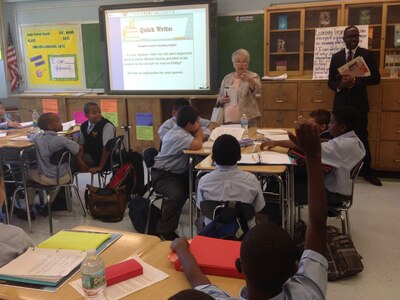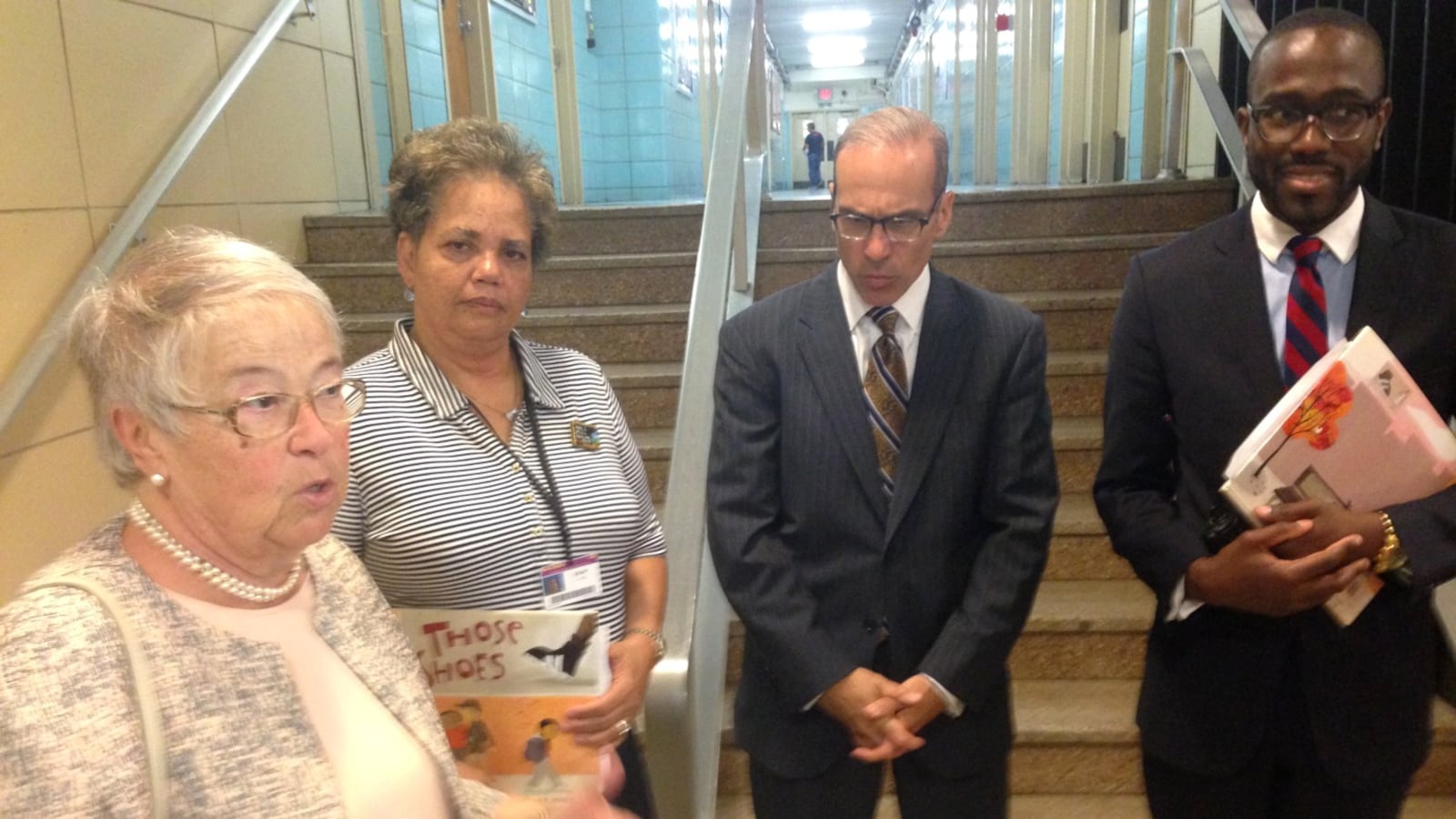When the city last fall proposed moving a new all-boys middle school into the same Staten Island building as I.S. 49, a large existing middle school in the community, scores of parents and students flocked to a public hearing to oppose the plan.
They fretted that the new public school, Eagle Academy For Young Men of Staten Island, would siphon resources from I.S. 49, cause overcrowding, and create safety hazards, according to the city’s summary of the meeting.
A year later, the new school has just opened inside I.S. 49’s building. But the community’s fears about the co-location have not come to pass, at least according to the schools’ principals, who met with Chancellor Carmen Fariña Monday when she stopped by for a visit.
Instead, the school leaders said they have worked closely together, agreeing to share facilities and even faculty members, in an example of the kind of cooperation that Fariña says the city will try to foster with a new set of space-sharing policies that she has promised to announce soon.
“This is a great co-located site,” Fariña said Monday. She added that the new policies will encourage other schools in shared buildings to do what I.S. 49 and Eagle Academy have started to do: “work together, share resources, talk to each other politely.”
Soon after taking office, Mayor Bill de Blasio allowed dozens of co-locations approved in the final weeks of the Bloomberg administration to move forward, upsetting many people who opposed the plans and had counted on de Blasio to reverse them.
But as a concession, City Hall and the education department promised a number of reforms to the space-sharing process. Those included school walkthroughs by department officials when new co-locations are being considered, more public hearings before final co-location votes, and “campus squads” that will be dispatched to buildings with co-located schools to help resolve disputes.
The city also formed two space-related advisory groups with members from a variety of backgrounds: one group was to review the way the city calculates the amount of free space in school buildings, while the other was to propose ways that co-located schools can “better grow alongside one another,” as a City Hall announcement put it in March.

The first group has already made some recommendations that apparently factored into the city’s latest school-space tallies. But the city has yet to announce any new space-sharing policies stemming from the second working group, which Fariña is helping lead and was tasked with suggesting ways that schools in the same building can more effectively share facilities, work with parents, and anticipate problems.
Last week, however, de Blasio said that he will soon unveil new guidelines for the most contentious type of co-locations — those that move charter schools into traditional-school buildings. After her tour of Eagle Academy on Monday, Fariña would not reveal what other new space-sharing policies her department has in the works, other than to say that they are aimed at spurring “some of the things you saw here today.”
The two Staten Island middle schools have found several ways to make the most of their joint placement, according to Eagle Academy Principal Jermaine Cameron and Linda Hill, principal of I.S. 49. (That school has struggled with student violence in the past, though the state this year removed it from its list of the most dangerous schools.)
The principals began working together in March, as soon as Cameron was hired, they said. Last week, they organized a common back-to-school meeting where their teachers met one another and planned procedures for the first day of school. Hill has also agreed to share her school’s new science lab with Cameron’s school, along with a teacher who works with non-native English speakers at I.S. 49, since Eagle Academy still has too few students to hire its own.
Meanwhile, a veteran I.S. 49 educator is mentoring Eagle Academy’s new physical education teacher, and Hill is letting Cameron in on some of the strategies she’s picked up during her decade as a principal (this is Cameron’s first year leading a school). Already, she’s given him a rundown of the neighborhood and the best way to work with local parents, the two said.
“The level of experience that Linda has is tremendous,” Cameron said. “She is a resource for me, as are her teachers for my teachers.”

